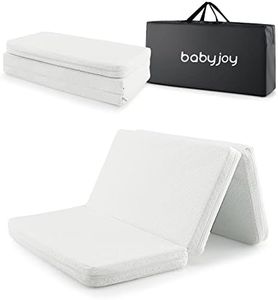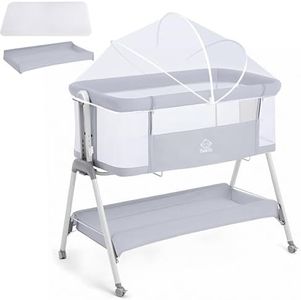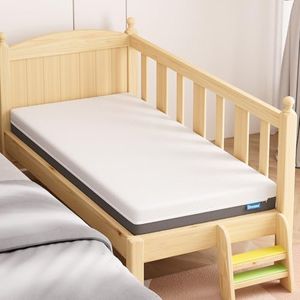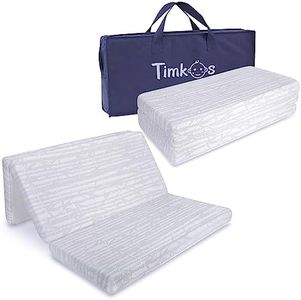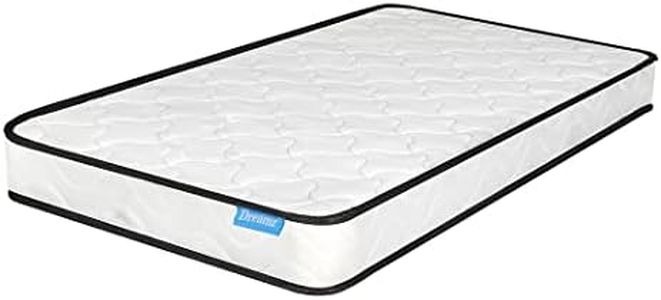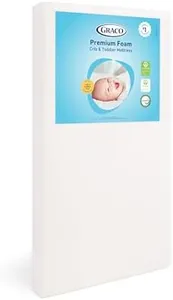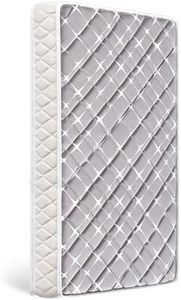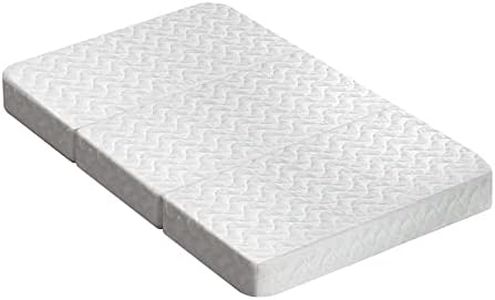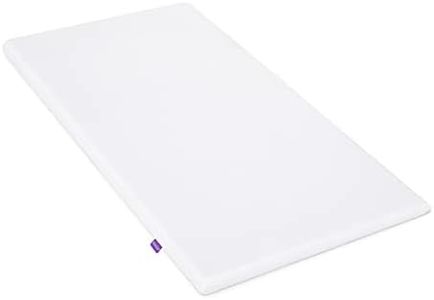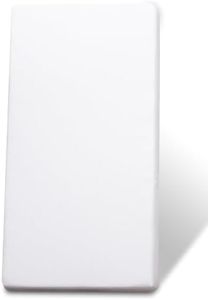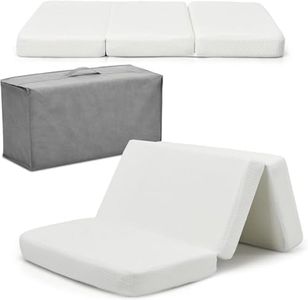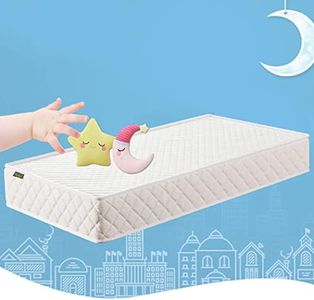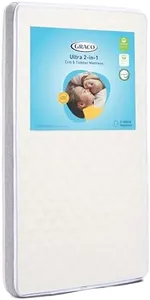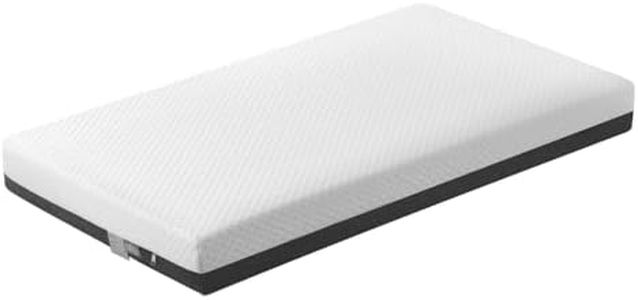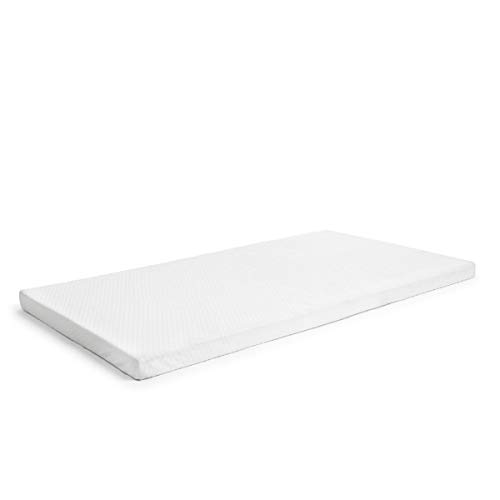We Use CookiesWe use cookies to enhance the security, performance,
functionality and for analytical and promotional activities. By continuing to browse this site you
are agreeing to our privacy policy
10 Best Baby Crib Mattresses
From leading brands and best sellers available on the web.Buying Guide for the Best Baby Crib Mattresses
Choosing the right baby crib mattress is an important decision because it affects your baby's comfort, safety, and sleep quality. Start by understanding that baby mattresses are not just miniature versions of adult ones; babies have unique needs since their bodies are developing, and they spend many hours sleeping. A good crib mattress should fit the crib snugly, be easy to clean, provide adequate support, and meet safety standards. Think about your priorities: some parents look for organic materials, others for waterproof features, and some focus mainly on firmness for safety. No matter what, always check that the mattress complies with safety guidelines.FirmnessFirmness refers to how hard or soft the mattress feels. With crib mattresses, firmness is especially important because a mattress that is too soft can increase the risk of suffocation or Sudden Infant Death Syndrome (SIDS). Generally, baby mattresses are much firmer than what you would use for older kids or adults. When testing firmness, press down gently on the center and edges: it should snap back quickly and not conform to the shape of your hand. For newborns and infants, always pick a firm mattress, even if it seems less cozy—you can switch to something slightly softer when your child is older.
Size and FitSize and fit refer to how well the mattress matches your crib's dimensions. The correct size ensures that there are no gaps between the mattress and the crib's sides, as any space can pose a trapping hazard. Standard cribs in many countries have regulated sizes, but it's always good practice to double-check. To test the fit, see if you can fit more than two fingers between the mattress and the crib sides; if you can, the mattress is too small. Always measure your crib and check mattress dimensions to guarantee a snug and safe fit.
Materials and AllergiesMaterials refer to what the mattress is made from, such as foam, innerspring, or organic materials. Some parents prefer organic or natural materials to minimize exposure to chemicals or allergens, while others want waterproof or easy-clean surfaces. If your baby has sensitive skin or you want to avoid certain substances, organic and certified low-VOC (volatile organic compounds) mattresses might be appealing. Consider whether the mattress meets recognized safety certifications or standards for materials. Choose the right materials based on your personal values and any sensitivities in your household.
BreathabilityBreathability describes how easily air can flow through the mattress. This is a safety feature to help regulate your baby's body temperature and reduce risks related to overheating and rebreathing of exhaled air. Some modern crib mattresses are made with breathable covers or cores. If you live in a warm climate or your baby tends to get hot while sleeping, breathability becomes more important. Otherwise, standard mattresses with good-fitting sheets are generally sufficient for most babies.
Waterproofing and WashabilityWaterproofing means that the mattress has a surface or layer that blocks liquids, which is useful for handling accidents and spills that happen often with babies. Washability indicates how easily you can clean the mattress—some have removable covers, while others might need to be wiped down. If you expect frequent messes or just want easier maintenance, look for waterproof models or mattresses with removable, machine-washable covers. For others, a waterproof mattress protector can provide an extra layer of convenience.
Dual-Sided (Infant/Toddler)Dual-sided mattresses have two surfaces: one firmer side for infants and one softer side for toddlers. This feature can extend the mattress’s usability since toddlers may prefer a bit more comfort as they grow. If you want a mattress to last through different stages, consider this type; just make sure to use the appropriate side for your baby's age. If you don't anticipate using the mattress beyond infancy, a single-sided firm mattress works just fine.
Weight and HandlingWeight and handling relate to how heavy the mattress is and how easily you can lift or move it. Lighter mattresses, such as those made from foam, can make sheet changes quicker and less awkward, especially if you’ll be doing this solo. Heavier mattresses, typically innerspring models, might feel more durable but can be cumbersome for regular cleaning or sheet swapping. Think about who will most often be changing the sheets or moving the mattress and pick a weight that makes it manageable for you.
